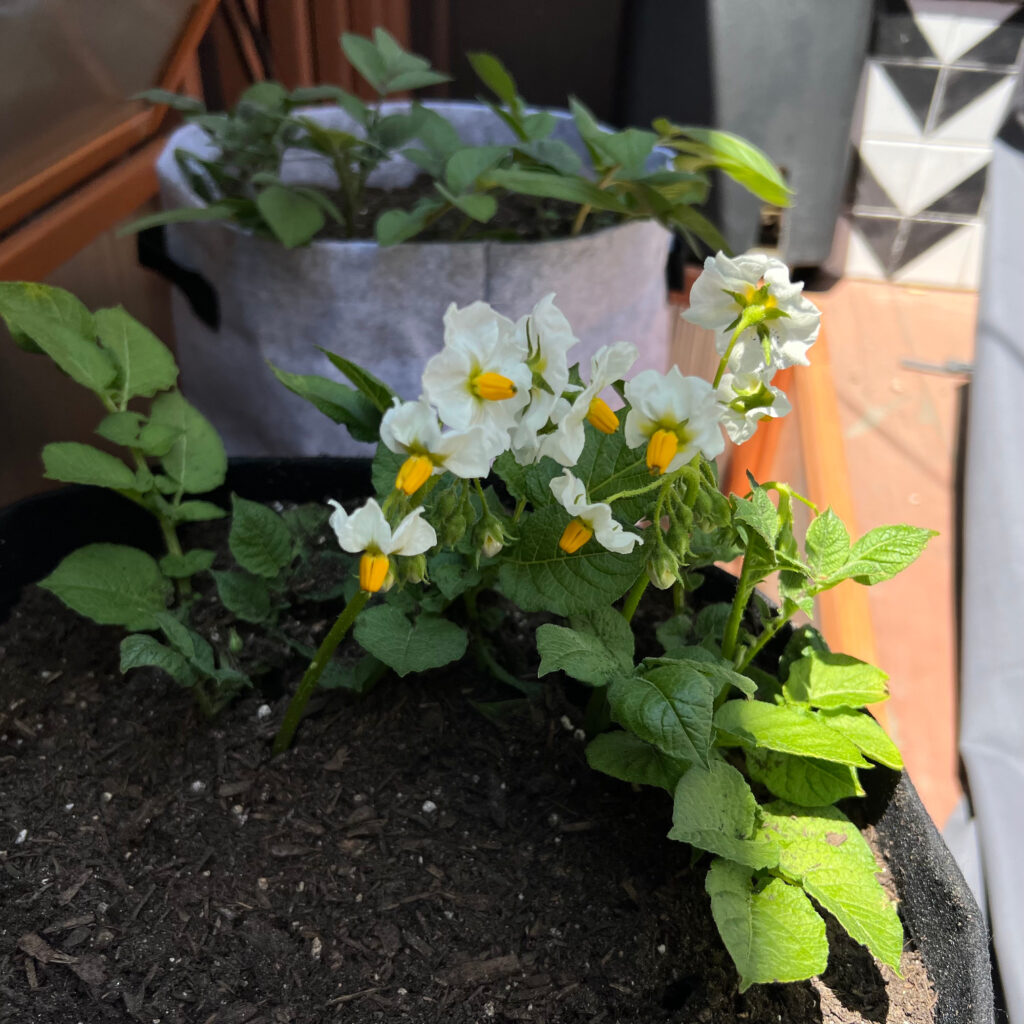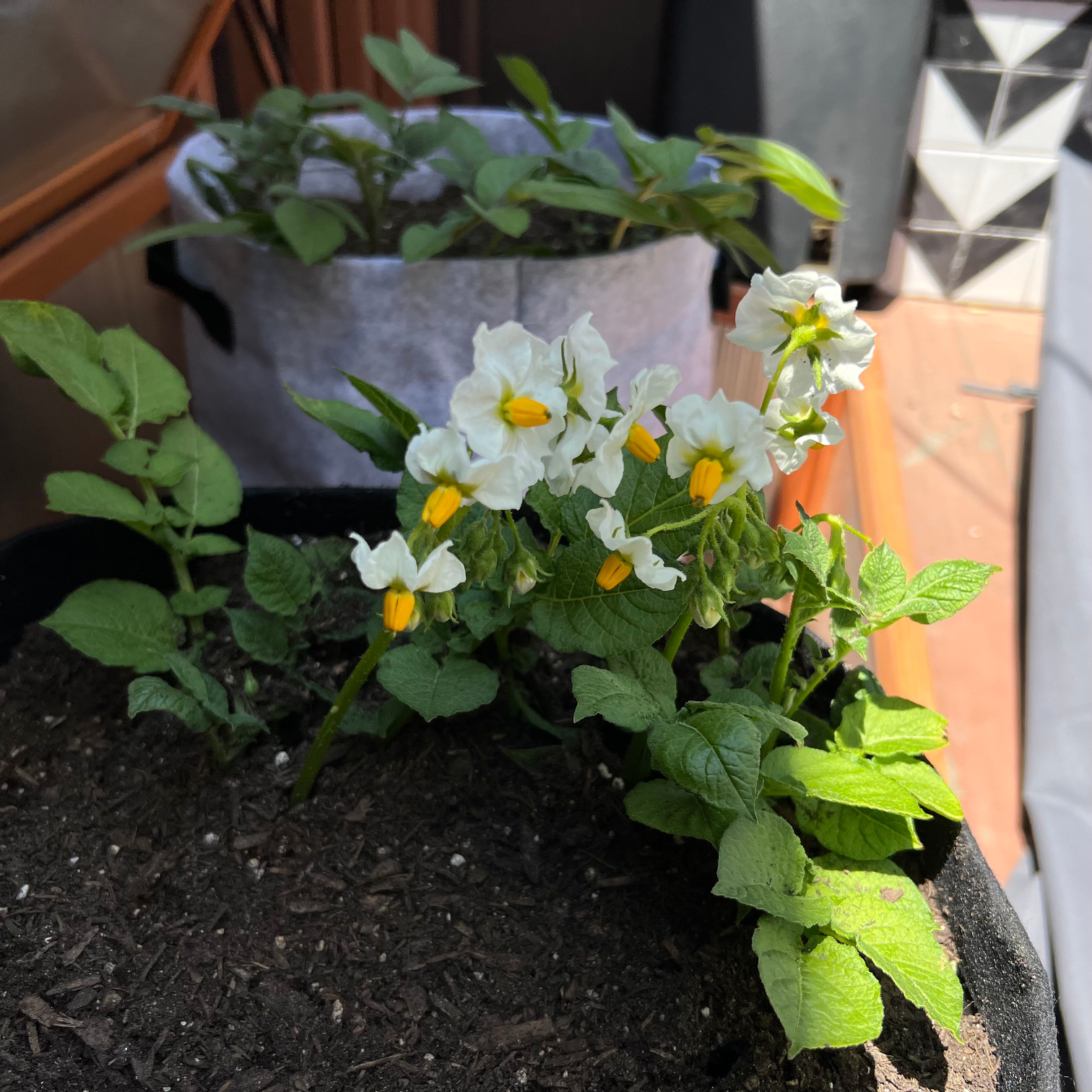You may be wondering why I’ve decided to once again try my hand at growing potatoes in grow bags on my back deck. It’s a solid question. Potatoes are not an expensive product at the market right now. They aren’t in short supply in the United States (although, apparently, this is not the case in Russia). So, why have I decided to put soil, water, and sunlight (not to mention grow bags) out in service of the potato? Because they are delicious.
That’s really all there is.
I’m not on a special potato diet. I’m not attempting to break potato harvesting records (although I would love that). I’m pretty sure I harvested fewer than 25 micro Adirondack Blue potatoes last year. No awards for me. But those potatoes were incredibly tasty.
So, here we are again. I have chosen one new (to me) variety and the returning Adirondack Blue (full size, instead of micro-tuber) option for growing potatoes in grow bags this summer. I purchased my seed potatoes from the Hudson Valley Seed Co (just info, not an ad).
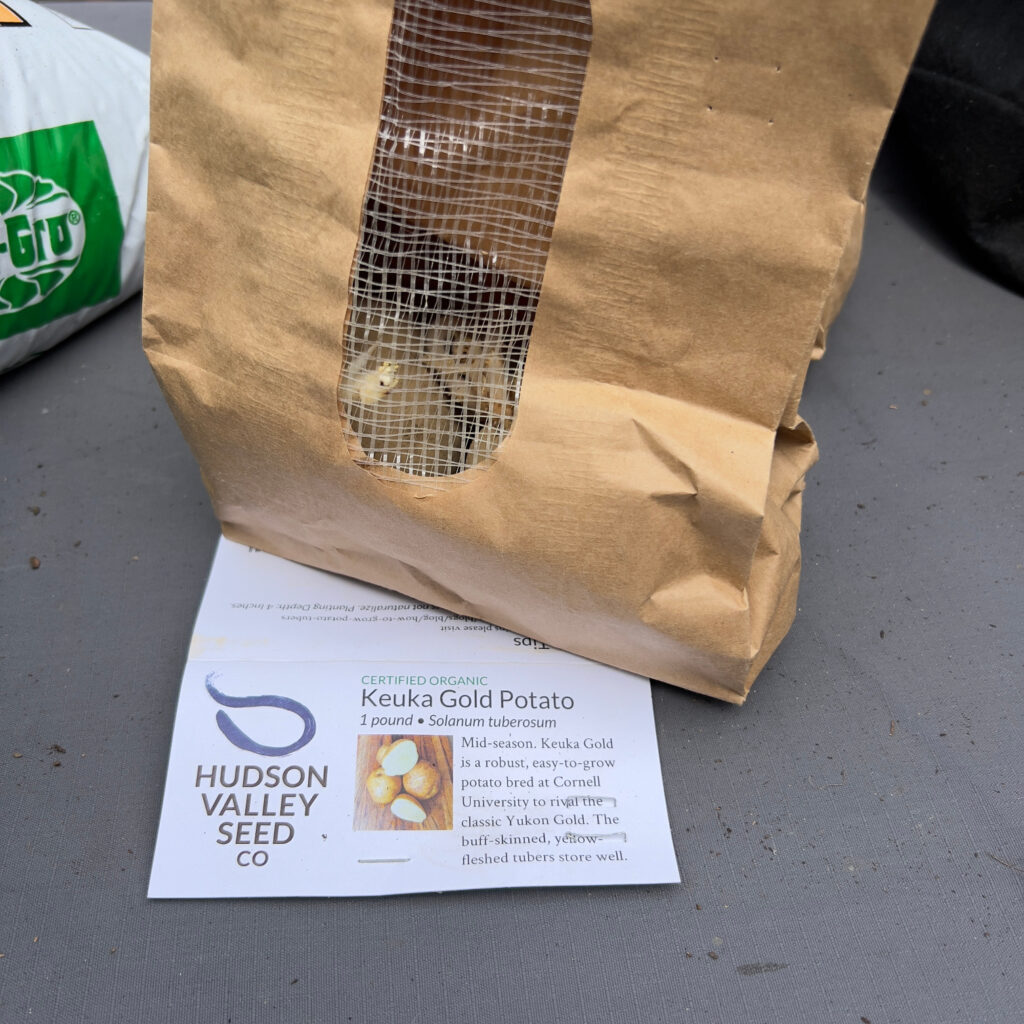
Growing potatoes in grow bags: the black bag
In the black 10-gallon grow bag, I’m growing Keuka Gold Potatoes. They are very close to the much beloved Yukon Gold potatoes. As an aside, I had the chance to have Tom Colicchio’s Yukon gold purée at Craft (RIP), and I will carry that ultra-creamy mashed potato full-sensory experience with me forever. Anyway, back to my potatoes.
I bought two certified organic seed potatoes, and then I accidentally let them sit for about three weeks before planting them. Eh, it’s probably fine. I certainly didn’t have any trouble finding the sprouts on these.

Growing potatoes in grow bags: the gray bag
In the gray 10-gallon grow bag, I planted the Adirondack Blue Potatoes. Again, the seed potatoes were certified organic. They are smaller, so I planted four of them. I’m hoping it’s okay that I put all four into the same grow bag. I probably should have split them, but I wanted them to get into the soil before we waved goodbye to May, and I didn’t have a ton of it on hand.
Choosing which seed potatoes to grow
Just a quick aside before we get to my progress report (I can tell that the suspense is building). There aren’t thousands of hard and fast rules about which seed potatoes to choose when getting ready to grow your own potato crop. Potatoes are a pioneer crop. Obviously, if you have depleted soil or blight (see the Irish Potato Famine), you might be in trouble. Otherwise, you are probably going to be fine.
My criteria for choosing a specific seed potato variety:
Taste. As you can tell from my earlier daydreams of the potato variety, a creamy potato makes me very happy.
Climate. Depending on where you are located, you may have some restrictions on what type of potatoes respond well to your climate. I live in Southern California, but I’m closer to the coast, so it’s cooler and can have damp mornings. Basically, we are somewhere between zone 10b and 11a. We have a long growing season, and we have a lot of options. Next year, I’m thinking about trying my hand with some Red Pontiac.
Timing. As I said, we have a long growing season. BUT I should have seriously started thinking about planting in the grow bags by the end of April at the latest. Alas, May 29 was the day. So, I chose varieties that not only taste great but have decent mid-season yields and mature relatively quickly. If you have a short growing season before scalding temps arrive, it will be even more important for you to choose varieties that respond well to heat or mature quickly.
Growing Space. I don’t have a lot of room, but I wanted to try full-size seed potatoes this season. However, I can recommend going for micro-tubers if you are growing potatoes in grow bags on a patio, balcony, or deck. They work well with limited real estate.
My progress
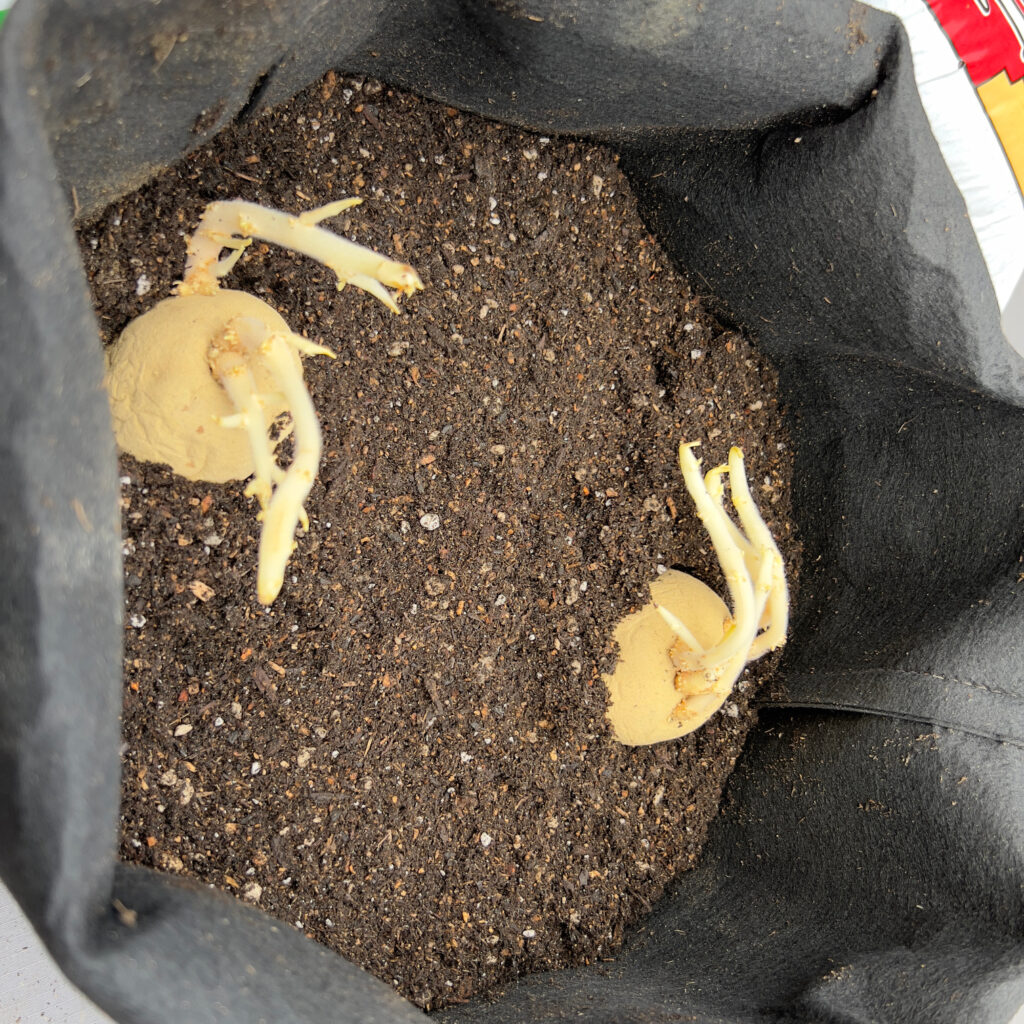
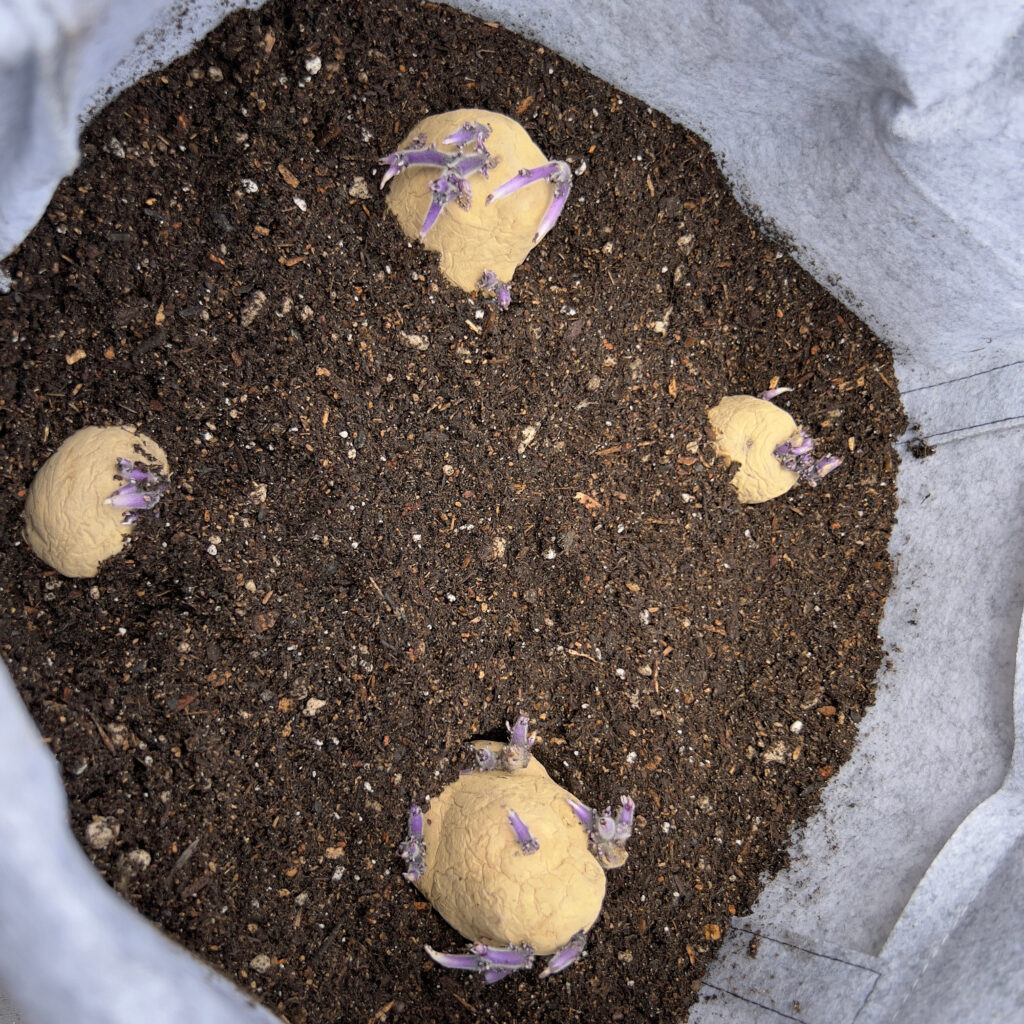
May 29: Planted the seed potatoes in the soil with the roots pointing up for easier sprouting. I could have cut the potatoes in half to get a bigger harvest, but I didn’t think I had even grow bag space. Something to consider for next year.
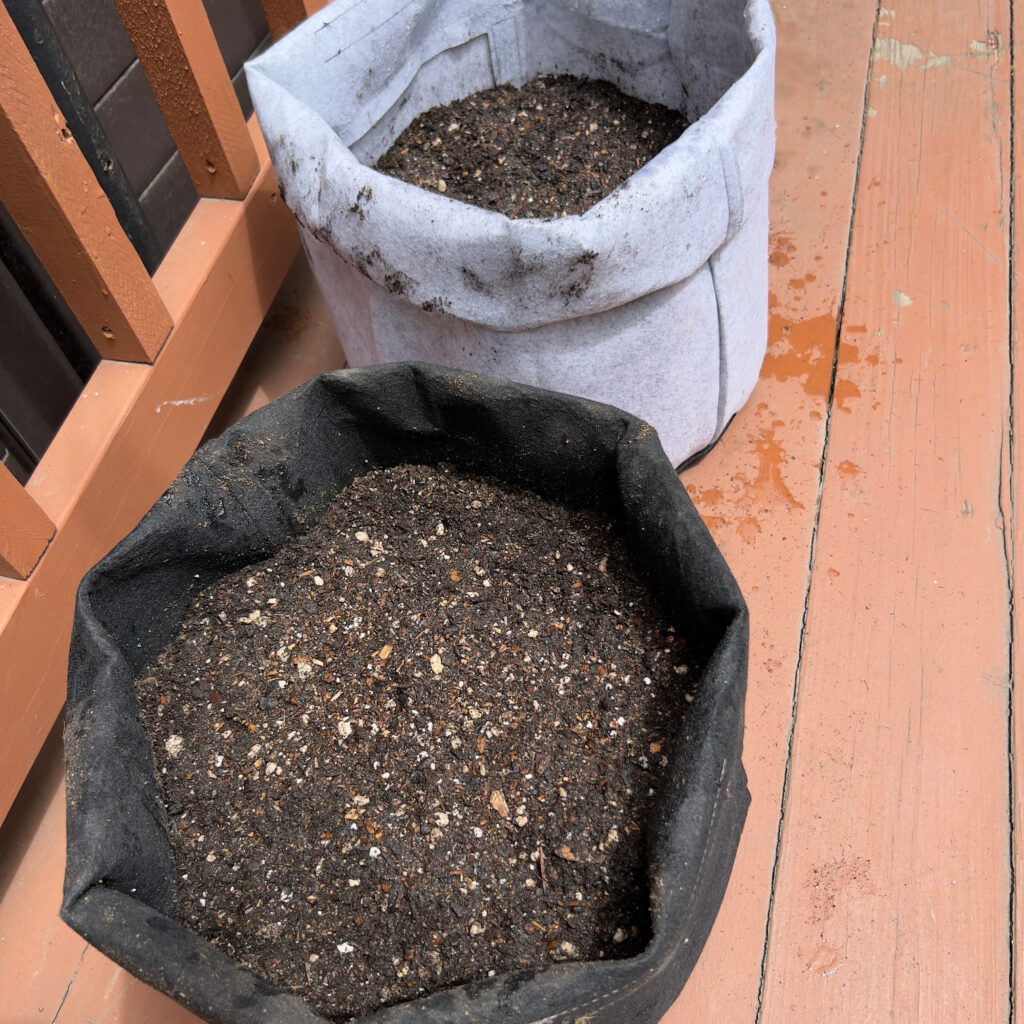
June 18: Leaves are starting to push through the soil on both grow bags! At first, I thought the Adirondack blues weren’t growing, but they were just harder to see and a little bit slower to punch through toward the sunlight.
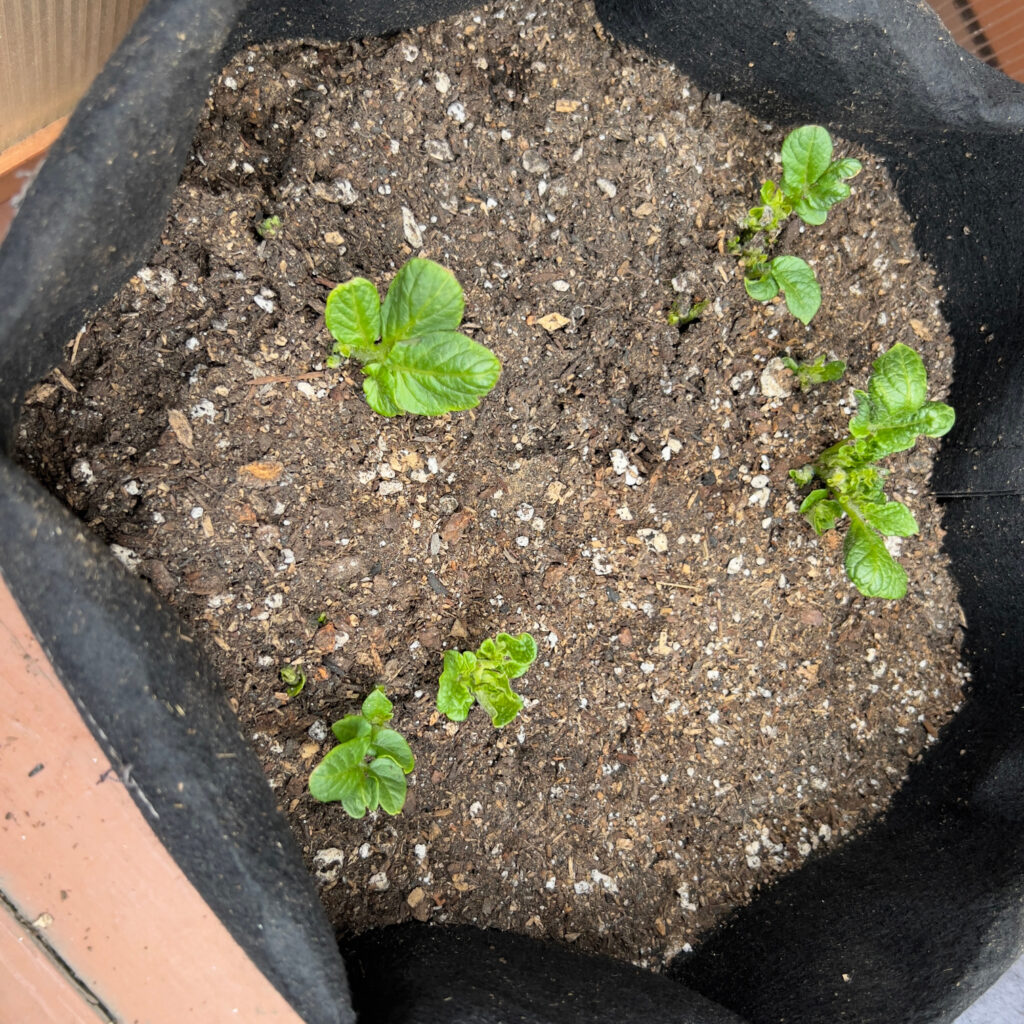
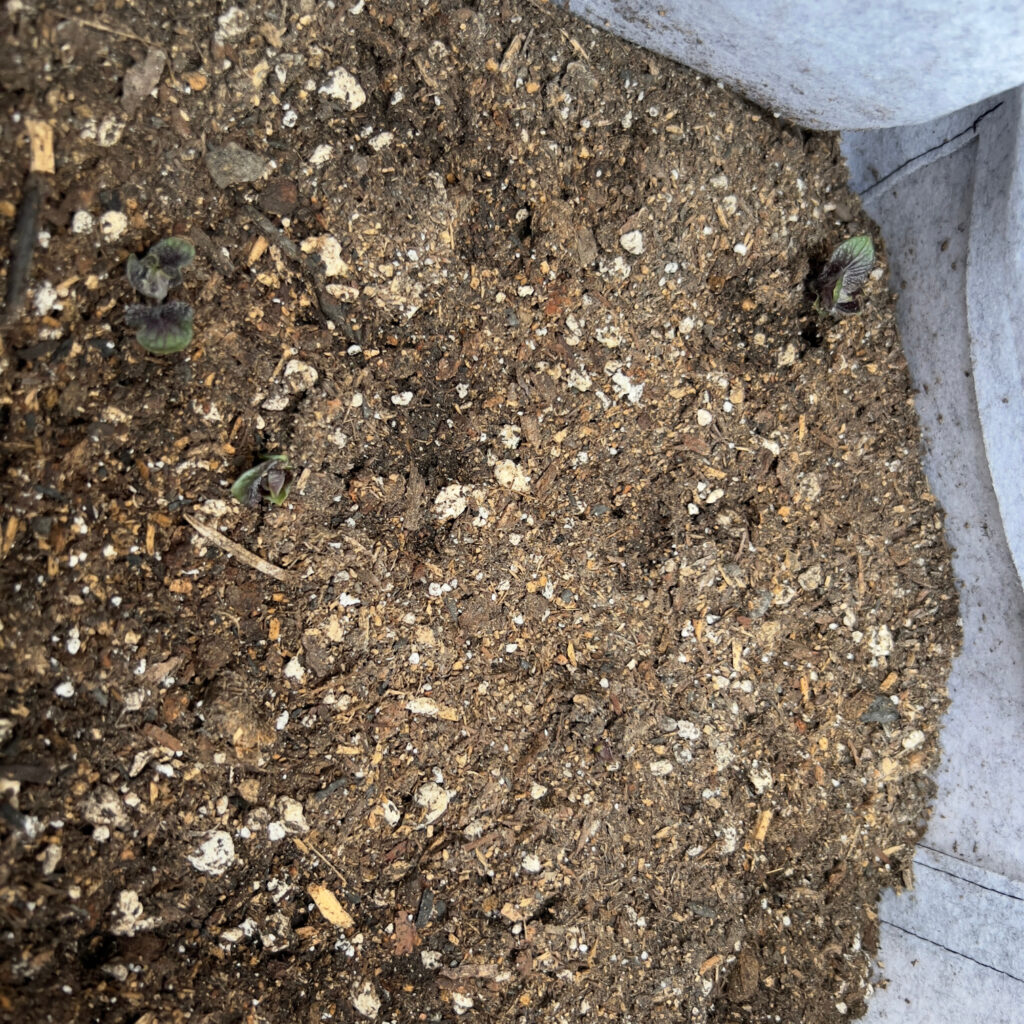
June 24: Big leaps in growth meant that I was ready for my first “hill up.” I added a significant amount of soil, leaving the tops of the leaves still reaching for sunlight.
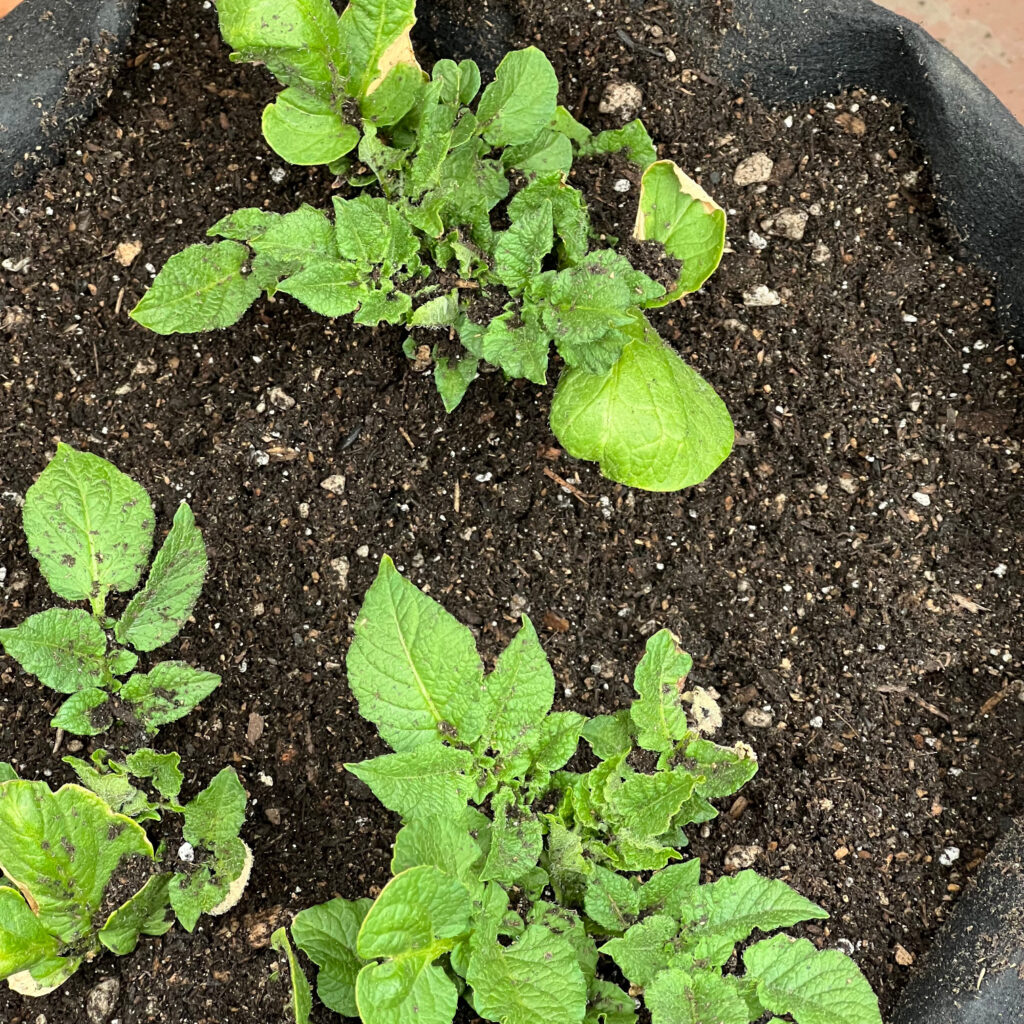
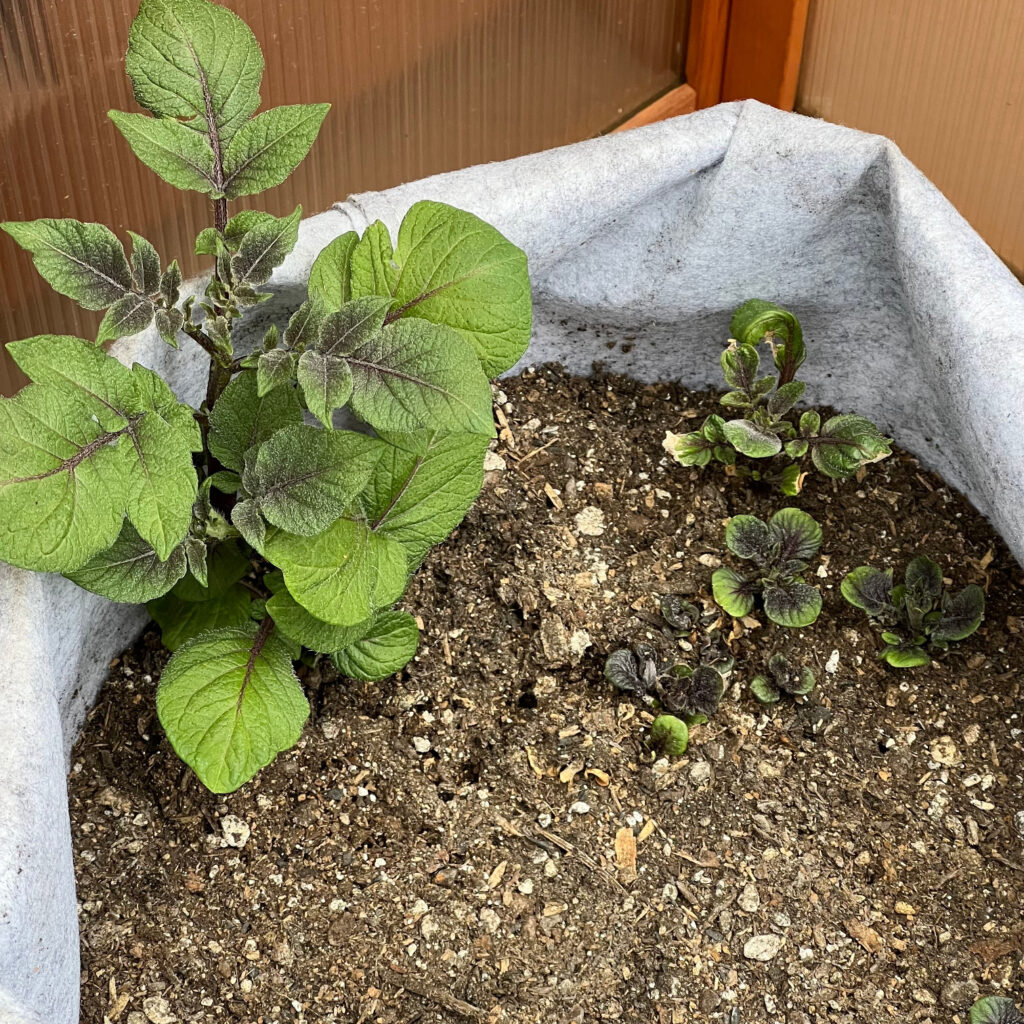
July 5: I was surprised to see the Keuka golds flowering! That doesn’t seem to happen with the Adirondack blues, so I wasn’t sure what was happening. It turns out that this is totally normal, although they are poisonous. Don’t add those flowers to your salad.
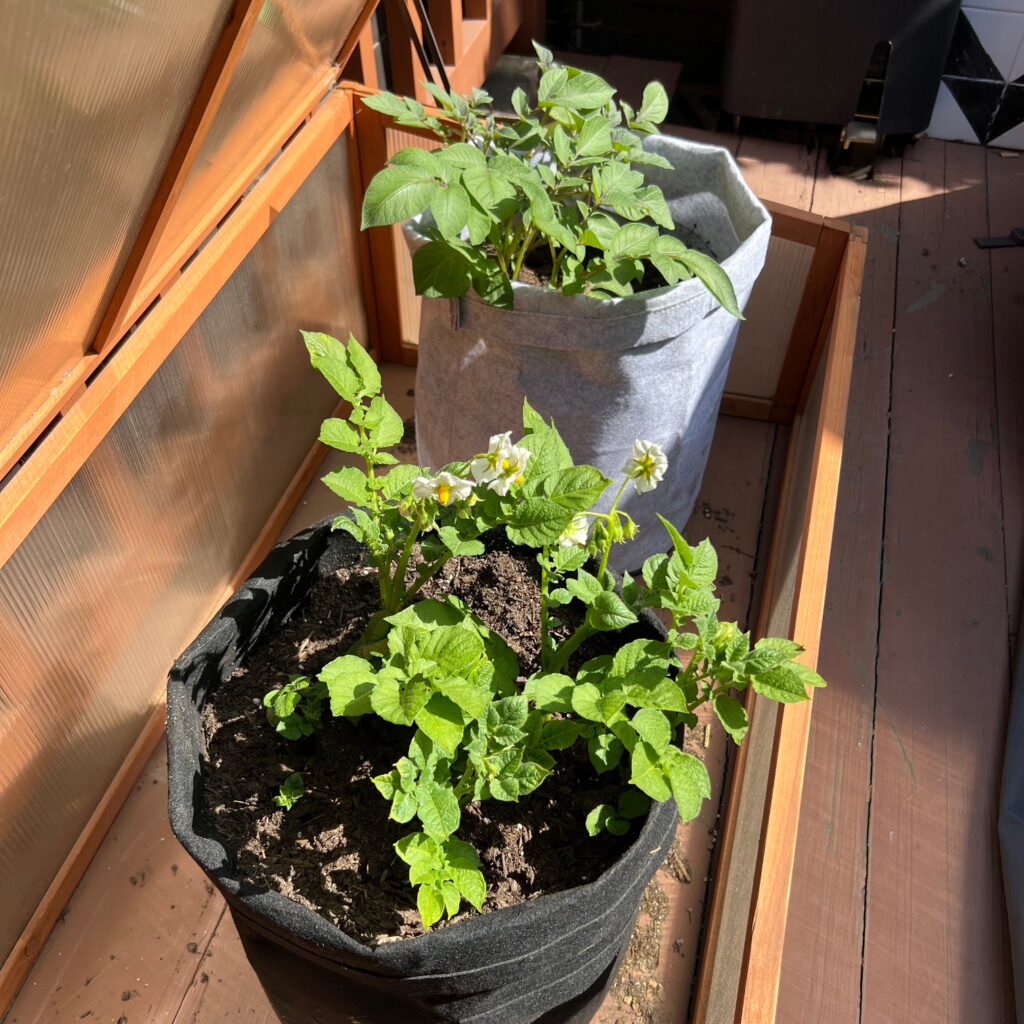
July 6: I gave them one more day before pulling the bags up to their full height and adding more soil. This is the last “hill up” before harvest (I think). So far, so good.
